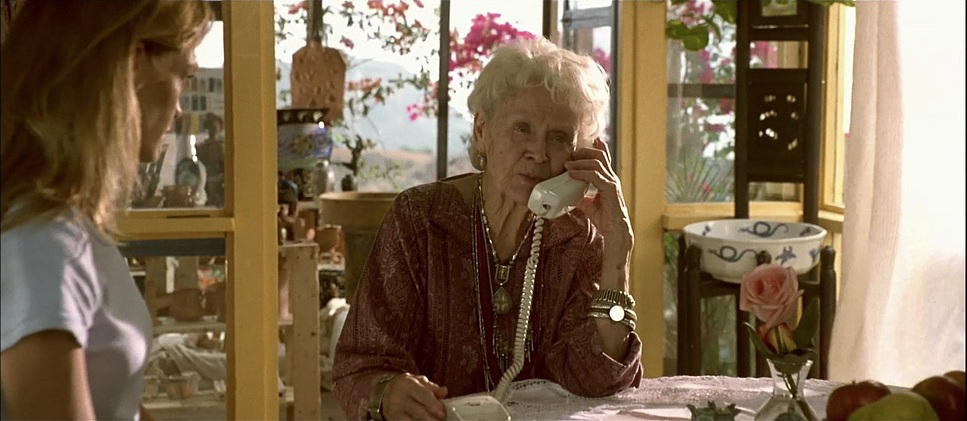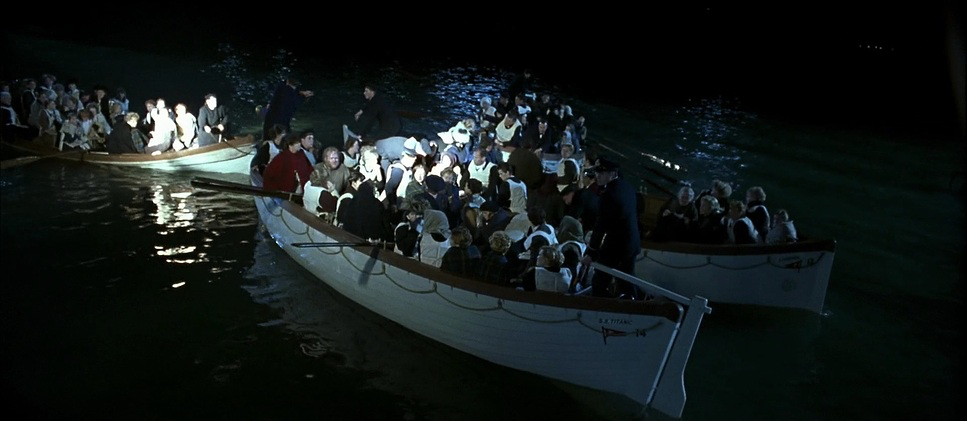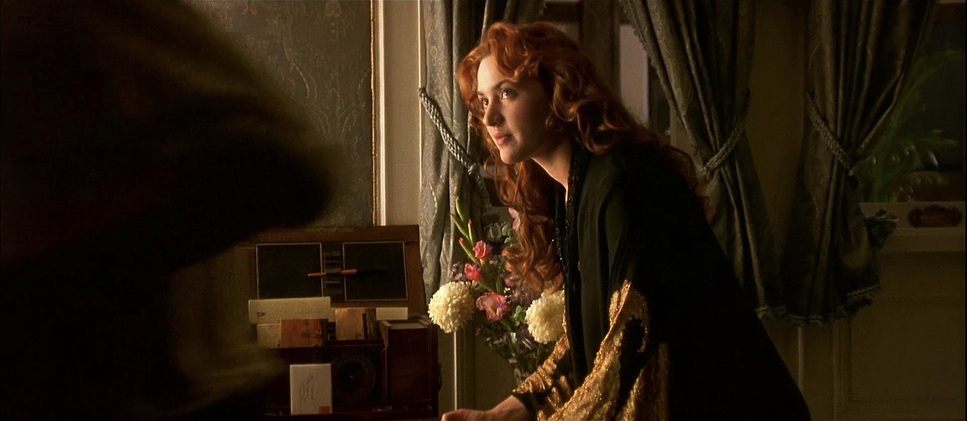My love for movies runs deep, and I channel this passion into my writings on cinematography, where I dissect and analyze the techniques that bring iconic films to life. Today, I bring you my in-depth analysis of of the film, Titanic, directed by James Cameron—a visual masterpiece that continues to inspire filmmakers and audiences alike.
Cinematography Analysis Of Titanic
About the Cinematographer

Russell Carpenter, the mastermind behind Titanic’s breathtaking cinematography, is nothing short of a legend in the field. His collaboration with director James Cameron on this project earned him an Academy Award, and for good reason. Carpenter’s ability to blend technical mastery with artistic expression makes his work in Titanic a textbook example of visual storytelling. His meticulous attention to detail and seamless partnership with Cameron transformed the film into an unforgettable cinematic experience.
Carpenter’s expertise is evident in his use of lighting, camera movement, and composition, all of which contribute to the emotional depth and historical authenticity of Titanic. Working with Cameron, a director known for his relentless pursuit of perfection, Carpenter delivered visuals that not only supported the narrative but elevated it to iconic status.
🎬 A Note from Salik:
I often get asked how I achieve the dense, filmic look in my commercial work. The secret isn't just color grading—it's the starting point. I have finally released my personal Master LUT Pack—8 distinct looks based on real film.
These aren't simple presets; they were crafted using complex math, empirical data, and precise tetrahedral operations to ensure technical integrity. This is the exact collection I've built over the years and used on 200+ high-end commercials.
*Compatible with Davinci Resolve, Premiere Pro, and FCPX.
Inspiration for the Cinematography of Titanic

As I delved into Titanic’s visual language, it became clear that Carpenter and Cameron’s meticulous research shaped every frame. The film’s aesthetic was deeply influenced by historical photographs, Edwardian-era art, and classic Hollywood epics like Gone with the Wind. The duo’s commitment to authenticity is visible in the lighting, framing, and design elements, which reflect the ship’s elegance and historical significance.
Cameron’s philosophy that audiences must first appreciate the Titanic’s grandeur to fully grasp the tragedy informed the visual choices. This is why the ship’s interiors glow with warm, inviting hues, evoking luxury and nostalgia. As the narrative shifts, the cinematography becomes colder and harsher, mirroring the ship’s descent into chaos.
For me, this interplay of inspiration and execution sets Titanic apart. The film not only recreates history but also captures its emotional resonance, thanks to Carpenter’s lens.
Camera Movements in Titanic

One of the hallmarks of Titanic is its dynamic camera work, which seamlessly transitions between grandeur and intimacy. The Steadicam and crane shots create a sense of scale and movement that few films have matched, while handheld shots inject immediacy and tension during the sinking sequence.
- Sweeping Crane Shots: Who can forget the iconic “I’m the king of the world” scene? The crane movement here encapsulates freedom and romance, drawing us into Jack and Rose’s budding love story while emphasizing the ship’s majesty.
- Steadicam Work: The fluid, intimate camera work in Jack and Rose’s scenes contrasts sharply with the chaotic handheld movements during the disaster. This shift mirrors the film’s emotional arc, from romance to tragedy.
- Underwater Cinematography: Cameron’s passion for deep-sea exploration shines through in the underwater sequences. The haunting beauty of the Titanic wreck, captured with specialized cameras, provides a poignant connection between the ship’s glorious past and its somber present.
These movements, in my opinion, elevate the film’s storytelling by immersing the audience in its epic scope while keeping the human drama at the forefront.
Compositions in Titanic

Carpenter’s compositions in Titanic are a masterclass in balancing scale with intimacy. Wide shots showcase the ship’s grandeur, while close-ups focus on the characters’ emotions, ensuring the human story remains central.
- Symmetry and Scale: The ship’s exteriors are often framed with a symmetrical grandeur that underscores its technological marvel. These shots convey awe and respect for the Titanic as both a setting and a character.
- Intimate Framing: Jack and Rose’s romance is brought to life through tight, intimate compositions that draw the viewer into their world. These moments feel personal, even against the backdrop of the vast Atlantic.
- Layered Depth: Carpenter’s use of depth adds richness to the frame. For example, scenes in the ship’s corridors or dining hall feature multiple layers of action, creating a bustling, lifelike environment.
Lighting Style of Titanic

Lighting in Titanic is not just a technical choice but a narrative tool. Carpenter’s lighting evolves with the story, reflecting shifts in tone and emotion.
- Warm Tones: The early scenes glow with golden, nostalgic light, symbolizing the optimism and elegance of the Titanic’s voyage. These warm hues draw the audience into the ship’s opulence and grandeur.
- Cold, Harsh Lighting: As the ship sinks, the lighting shifts to icy blues and greys, evoking the unforgiving Atlantic and the despair of the disaster. This tonal contrast underscores the story’s emotional trajectory.
- Romantic Candlelight: Intimate scenes, such as Jack sketching Rose, are bathed in soft, diffused light that enhances their dreamlike quality. This lighting choice adds a timeless, romantic layer to their love story.
Lensing and Blocking in Titanic

Carpenter’s choice of lenses and blocking is another aspect of Titanic’s visual brilliance. Wide-angle lenses capture the ship’s scale, while close-ups with shallow depth of field highlight the characters’ emotions.
Blocking is equally purposeful, guiding the viewer’s focus and emphasizing relationships. For instance, Jack and Rose are often placed in the foreground with the Titanic looming behind them—a visual reminder of their place within the larger tragedy.
Color Palette of Titanic

The film’s color palette is a study in contrasts, with warm, sepia tones symbolizing nostalgia and icy blues representing the harsh reality of the disaster.
- Warm Sepia Tones: The shipboard scenes glow with warmth, evoking a bygone era of luxury and optimism.
- Icy Blues and Greys: The cold tones of the sinking scenes emphasize the grimness of the disaster, contrasting sharply with the earlier warmth.
- Symbolic Costuming: Rose’s wardrobe transitions from restrictive, muted tones to warmer, freer colors, mirroring her character’s emotional journey.
This meticulous use of color enhances the film’s emotional impact, making it a visual and narrative triumph.
Technical Aspects: Cameras, Lenses, and More
From a technical standpoint, Titanic broke new ground. Carpenter and his team used Panavision Panaflex Gold cameras with Primo lenses to achieve the film’s cinematic look.
Specialized underwater cameras allowed the team to capture stunning footage of the Titanic wreck, while practical effects and CGI seamlessly blended to recreate the ship’s demise. The use of a widescreen aspect ratio further emphasized the ship’s grandeur, enhancing the film’s epic scope.
- Also Read: CINEMATOGRAPHY ANALYSIS OF THERE WILL BE BLOOD (IN DEPTH)
- Also Read: CINEMATOGRAPHY ANALYSIS OF THE SHINING (IN DEPTH)
Browse Our Cinematography Analysis Glossary
Explore directors, cinematographers, cameras, lenses, lighting styles, genres, and the visual techniques that shape iconic films.
Explore Glossary →